One of the world’s most invasive species has arrived on the East Coast – and experts say that one way to fight back is to eat the ‘delicious’ creature.
The tiny predator has started showing up along beaches and bays from Maine to Delaware, threatening to impact business and wildlife.
But restaurants across the Long Island Sound are combating the dangerous creature by turning it into a ‘remarkable’ and ‘intense’ dish that can be served fermented, in a stock or as a curry.
The culprit is the European green crab, which the National Oceanic and Atmospheric Administration has branded a ‘voracious predator.’
The creature eats up to 40 mussels a day and lays 165,000 eggs a year, according to the One Fish Foundation.
The green crab is known for eating king crab, as well as juvenile salmon.
NOAA warned that the crab ‘could potentially damage Alaska’s multi-billion dollar fisheries industries,’ which will also now be tracked on the East Coast.
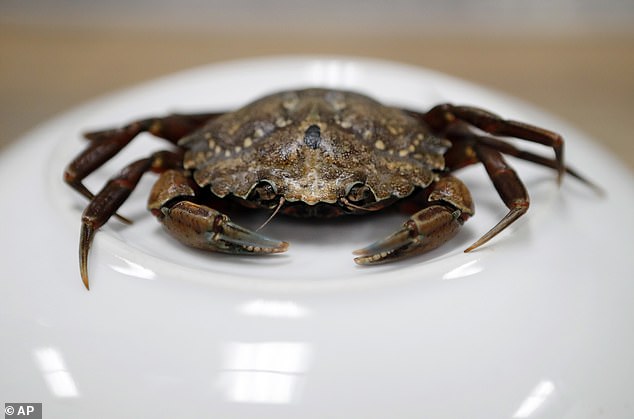
The green crab, one of the world’s ‘most invasive species,’ is now on the East Coast
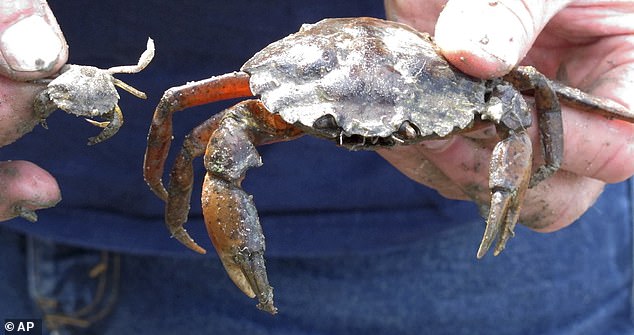
Experts say that one way to combat the crustacean’s spread is to eat the creature
One way that locals are curbing the spread of the green crab is by devouring the crustacean.
Mary Parks, the executive director of GreenCrab.org, told the Hartford Courant: ‘Fortunately, green crab is also a sustainable seafood that is popping up on menus across the US.
‘It can be served soft-shell, fermented, shucked for roe or transformed into stocks, sauces and soups.’
The green crabs are at their most flavorful and desirable within 12 hours of molting, when their shells are still soft and their tissues are tender.
Zach Redin, a chef at the mobile fish market To The Gills, started cooking with green crab this year.
He said: ‘When you make a stock with green crabs it starts off gray and cloudy and then becomes this dark green color. It has this intense crab flavor that is just remarkable.
‘You can make it with blue crabs but it wouldn’t have the same flavor.’
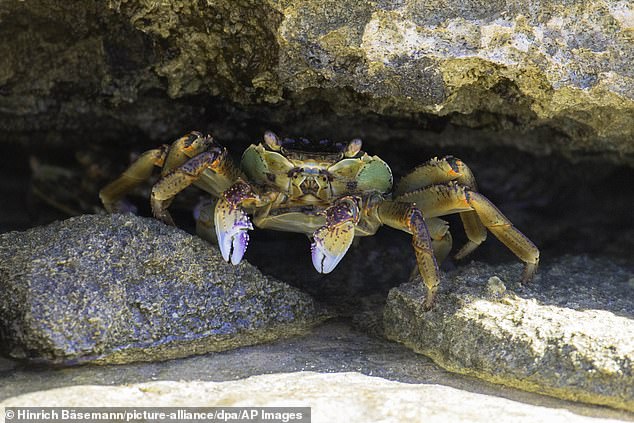
Green crabs can be found on both coasts of North America, Australia, Argentina, Japan and South Africa

The green crab’s flavor has been described as ‘unique’ or ‘intense’ (file photo)
Redin called the flavor of the green crabs ‘unique’ and ‘intense,’ which surprises people when they try it.
The chef added: ‘The green crab flavor is so intense, but a lot of people don’t know what to do with them because there’s no practically meat on them.
‘They’re very tiny crabs so they’re mostly used for stock or making a crab chili oil. But once people learn how to cook them, it’s really a lot of fun.’
He predicted that green crabs will appear on more menus as more people discover their exotic flavor.
Redin recently sold soft-shell green crabs, green crab curry and green crab stock.
Despite its taste, there are still plenty of reasons to be cautious about the green crab.
The creature decimates marine environments while rapidly eating a variety of shellfish.
Green crabs can live on nearly any coast, including rocky shores, cobble beaches and tidal marshes.
The animal can tolerate a wide range of temperatures and salinity, which makes it extremely adaptable to a variety of habitats.
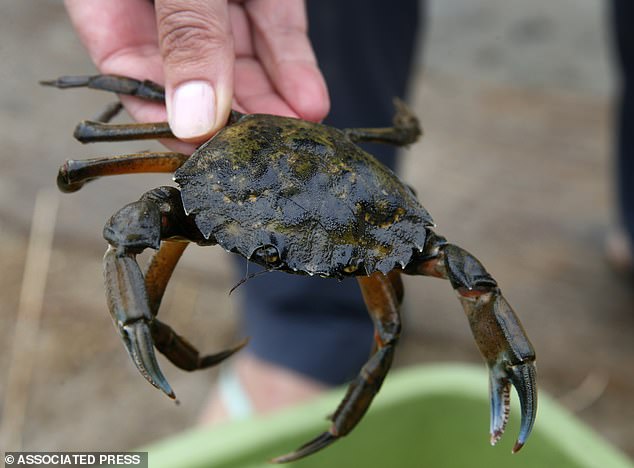
They can be identified by counting the five spines behind the eye on each side of its shell
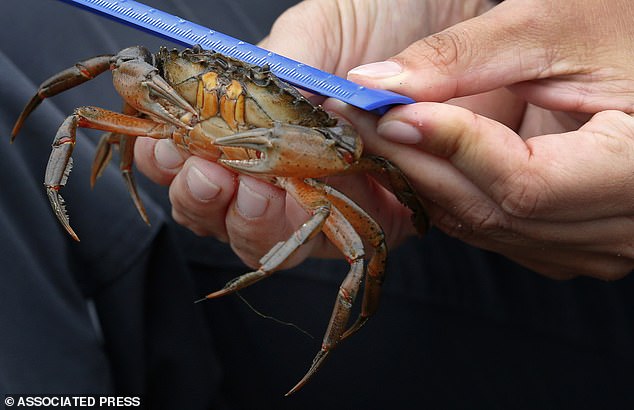
Green crabs are not always colored green, as they can have shades of brown and yellow
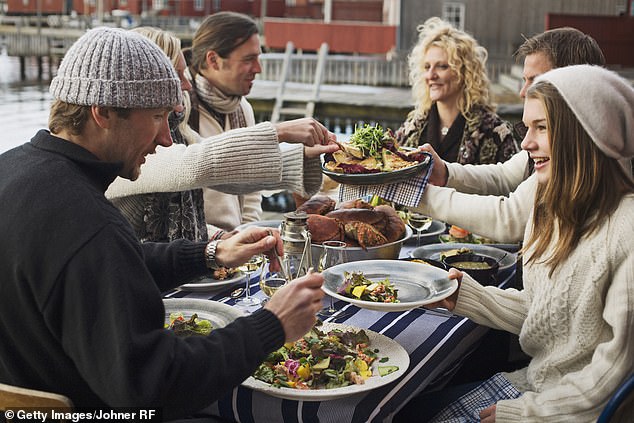
When the green crab is molting, which is when it is most flavorful, the bottom can turn orange or red (file photo)
One of the challenges in dealing with green crabs is that they are not actually always colored green.
The top of a green crab’s shell might be dark brown or dark green with small yellow patches. When it’s molting, the bottom can turn orange or red.
Instead, green crabs can be recognized by the unique shape of their shell.
According to NOAA, the best way to identify green crabs is by counting the five spines behind the eye on each side of its shell.
Green crabs first reached North America in the 1800s.
The creature likely traveled from Europe in the ballast water of merchant ships.
The first recorded sighting or record of a green crab on the East Coast was in 1817, according to the Alaska Department of Fish and Game.
Nowadays, they may be transported with shellfish or equipment in aquaculture operations, which NOAA called ‘farming in water.’
Currently, green crabs can be found on both coasts of North America, Australia, Argentina, Japan and South Africa.
